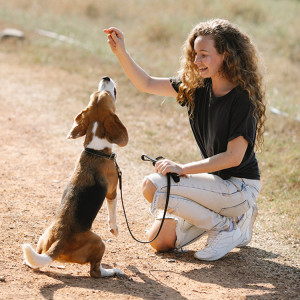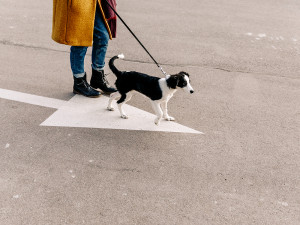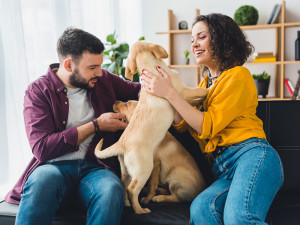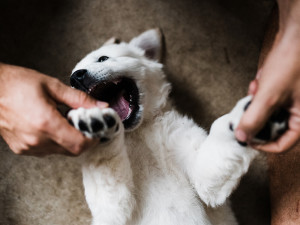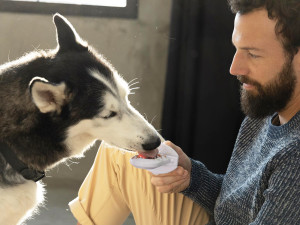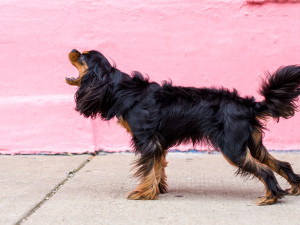Why You Shouldn’t Be Skeptical of Positive Training Methods
It is powerful enough, even for the tough cases, and it is the best choice—here’s why.
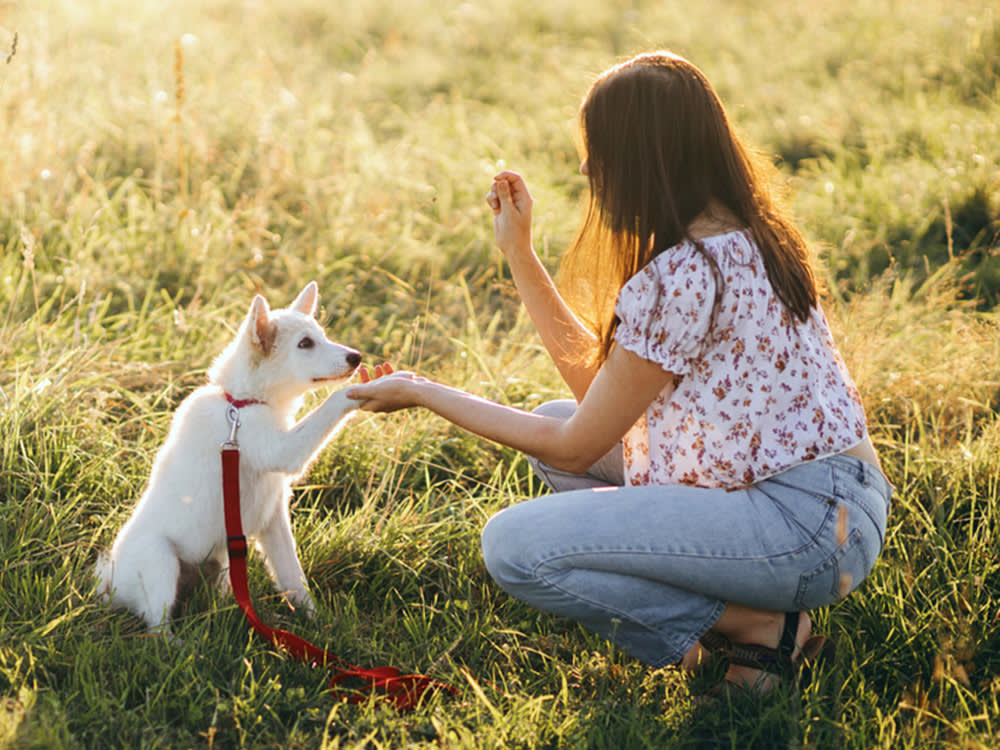
Share Article
I work with all kinds of dog issues in behavior and training from teaching basic skills like sit, stay, come, and high-five to dealing with dogs who have such a serious bite history that the family is wondering if they can keep them. I specialize in working with aggressive dogs, and I work exclusively with positive techniques, which often puzzles people. There is a common idea that positive methods work for simple training goals but that “more powerful” techniques are necessary to change the behavior of dogs with tougher, more serious issues. By “more powerful,” people mean harsh styles of training that use punishment.
I say again and again to people who express this view that I use positive techniques not just because they are the most kind and humane, but also because they are also the most effective. Many people are dubious, and I take great care to explain.
Let me make my case here about why I use and advocate for the use of positive methods when working with all dogs, including those exhibiting aggression.
Positive methods are powerful.
Being gentle, kind, and humane with positive methods is a powerful way — not a weak way — to influence the behavior of dogs. Positive reinforcement is at the core of positive dog training, and it works so well in all kinds of situations and for all kinds of individuals. The reinforcement (treat, toy, play, etc.) makes the desired behavior more likely, and it also changes the brain chemistry of the dog in a beneficial way. Furthermore, the anticipation of the reinforcement has an even bigger effect on the brain than actually receiving it. That means that as the dog learns the system and understands that a treat is coming, positive reinforcement becomes potentially even more powerful.

Positive dog training is so much more than simply using positive reinforcement, though that is a huge part of it. By using this method of training, you’re helping to give dogs the tools they need to behave in an acceptable way when in a challenging situation, such as meeting a new person or dog. It is unkind to put dogs into situations they can’t handle, and it’s even more cruel to become upset with them when they inevitably exhibit undesirable behaviors.
An undervalued aspect of positive training involves adjusting the environment to make it harder for them to do the wrong thing and easier for them to do the right thing. When dogs do the right thing, their behavior is reinforced, which strengthens that behavior. Setting dogs up for success and reinforcing that success is a key part of positive training, and it adds to the power of the process.
Positive methods have so many other advantages.
In addition to being powerful, positive training methods have lots of other advantages. They do not rely on fear or pain to influence behavior, and that allows the learning process to be an enjoyable activity you and your dog do together instead of unpleasant for both of you. Unlike other methods, positive methods are less stressful for dogs and better for their welfare.
Positive techniques build relationships and strengthen bonds instead of compromising them because they are shared good experiences rather than scary or uncomfortable ones. Not only is that beneficial to your lives but also to the training itself. Good relationships have always been a central part of good, effective learning experiences.
A fundamental training principle is that it is better to teach your dog what you want them to do rather than what you don’t want them to do. Punishing your dog for jumping on or biting visitors doesn’t help your dog know what they should be doing in that context. It’s better and more effective to teach them to sit when greeting someone or to go get a toy and bring it to you for a tug session when someone comes into the house. A useful way to remember to be positive and kind is to remind yourself a dog doesn’t need a correction to change their behavior, but they do need help to change it.
Sticking to positive methods with aggressive dogs is especially important.
I believe strongly that dogs with aggressio n and other behavior problems deserve our sympathy, as well as our kindness. Philosophically, I subscribe to the idea that dogs are not giving me (or their pet parents) a hard time, they are having a hard time. I’m sympathetic to them, and I want to be kind to them always. That is never truer than with aggressive dogs. The majority of aggressive dogs (80 percent of my cases, for example) are behaving aggressively primarily because they are afraid. If we want them to stop behaving aggressively, we need to help them conquer their fears. Being harsh in any with them is completely counterproductive to achieving that goal.
For example, imagine that a dog is afraid of new people, and every time they see a new person, they bark, growl, lunge, and bite if they are close enough. If you yell at them or punish them in any way, they learn that every time a person shows up, bad things happen to them (you getting upset with them is most definitely a bad thing!), which only makes them more afraid.
In contrast, suppose every new person they encounter tosses them treats, something to chew on, or a new toy. If this is done correctly by paying attention to a lot of details — such as the distance between the person and the dog, the order in which the dog is exposed to particular people, and the situations you choose to put the dog in — the dog learns that people are the source of happiness via food, chews, and toys.
They learn to be happy when they see a new person because they have been classically conditioned to associate a new person with good things that make them happy. Classical conditioning is a very powerful type of learning, and it is a very effective way to change the behavior of aggressive dogs. It is a positive technique because when done correctly, the dog is only in situations in which they can cope, and over time the scope of situations they can handle is expanded. The undesirable behavior stops because the negative emotions at the root of the problem are being avoided.
Making sure the training environment is a happy rather than a scary one is critical to behavioral change, and that can only be done with positive methods, not by adding fear or pain to their life. Counterintuitively to many people’s opinion, using positive methods with aggressive dogs is effective, and harsh methods cannot be successful. In fact, because I so often want to change a dog’s emotions to stop their aggressive behavior, I use play a lot when working with aggressive dogs.
Play can be a reinforcement, a distraction, an incompatible behavior, a relationship-building opportunity, and a way to help a dog associate good feelings with a trigger that used to scare them. Play is so powerful and despite becoming more popular as a means of behavioral change, it is still underutilized in influencing canine behavior. Think of the difference in what a dog is learning if they were to be yelled at for barking and growling at a dog passing by the window (“I hate it when dogs go by!”) versus if they were to be offered a chance to play tug every time a dog walked by the window (“I love it when dogs go by!”).
Positive methods work even in tough cases.
There is still a common sentiment out there that positive reinforcement training is worth trying, but if you have a really serious behavior problem on your hands (such as aggression) that it probably won’t work — that it’s not strong enough for such a big task. The truth is that positive methods are powerful and have a host of other advantages, and that is true no matter what you want to teach a dog and what behavioral challenges are the issue.
Positive training is not just good for basic dog training and behavior. It’s superior in general, and it’s filled with advantages that are not only true when treating aggressive dogs, but — in some cases — especially true when working with aggressive dogs.
References:
The Eye of the Trainer opens in new tabby Ken Ramirez
Don’t Shoot the Dogopens in new tab by Karen Pryor
Train Your Dog Positively opens in new tabby Victoria Stilwell
The Midnight Dog Walkers opens in new tabby Annie Phenix
Treat Everyone Like a Dog opens in new tabby Karen B. London, PhD

Karen B. London, PhD, CAAB, CPDT-KA
Karen B. London is a certified applied animal behaviorist (CAAB) and certified professional dog trainer (CPDT) who specializes in working with dogs with serious behavioral issues, including aggression. She has written for a variety of magazines including The Bark, Clean Run, and the APDT Chronicle of the Dog, and has published in scientific journals including Behavioral Ecology and Sociobiology, Ethology, Ecology, and Evolution, the Journal of Insect Behavior, and Insectes Sociaux. She is the author of seven books about dog training and canine behavior, including the forthcoming My Dog's Mystery Adventure: And Other Stories From a Canine Behaviorist and Dog Trainer.
Related articles
![Golden retriever puppy upside down playing with a mans hands and attempting to play bite.]()
How to Train a Puppy Not to Bite
Those little razor teeth are no fun.
![Mini shepherd laying on ground licking pupsicle toy]()
The Pupsicle Will Soothe Puppies Who Need to (Literally) Chill
Woof’s innovative fillable design will help dogs de-stress and their parents save money.
![A bearded man in a gray sweater and yellow pants sitting on the floor and holding a Groov Training Aid in "lilac" from Diggs Pet, which is like a grooved plastic popsicle with treats smeared in, while his Husky dog licks it]()
9 Stress Toys For Dogs That Are Cheaper Than Therapy
The toys that’ll help your pup chill out after a long day of being a dog.
![Puppy hides under the couch in fear]()
How to Keep Your Dog From Freaking Out When You Have Company
Do these things to help your pup (and your guests) feel chill.
![Dog barking on the sidewalk in front of a pink wall]()
How to Fix Your Dog’s Non-Stop Barking
You can live in a quiet house again.

